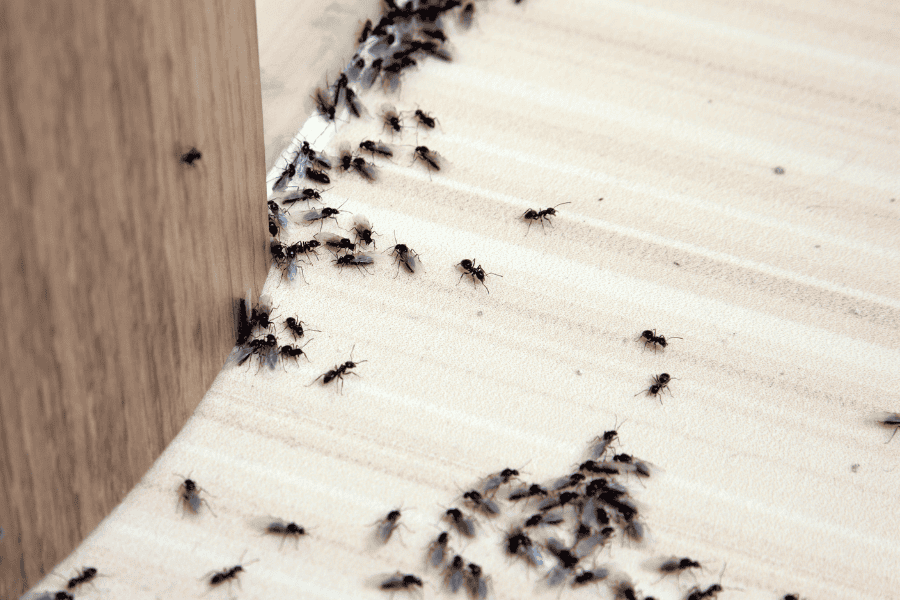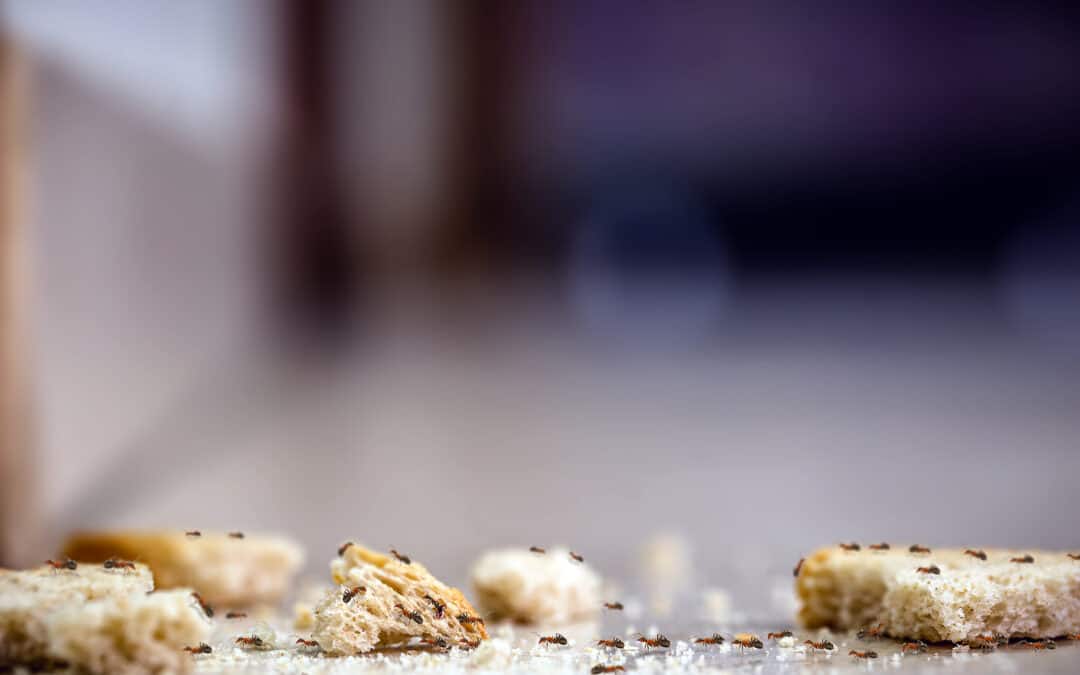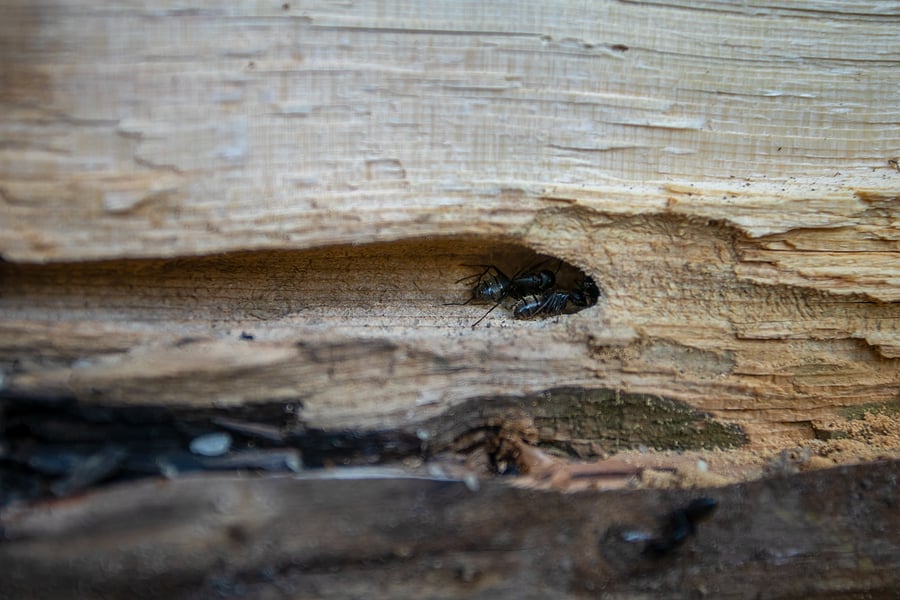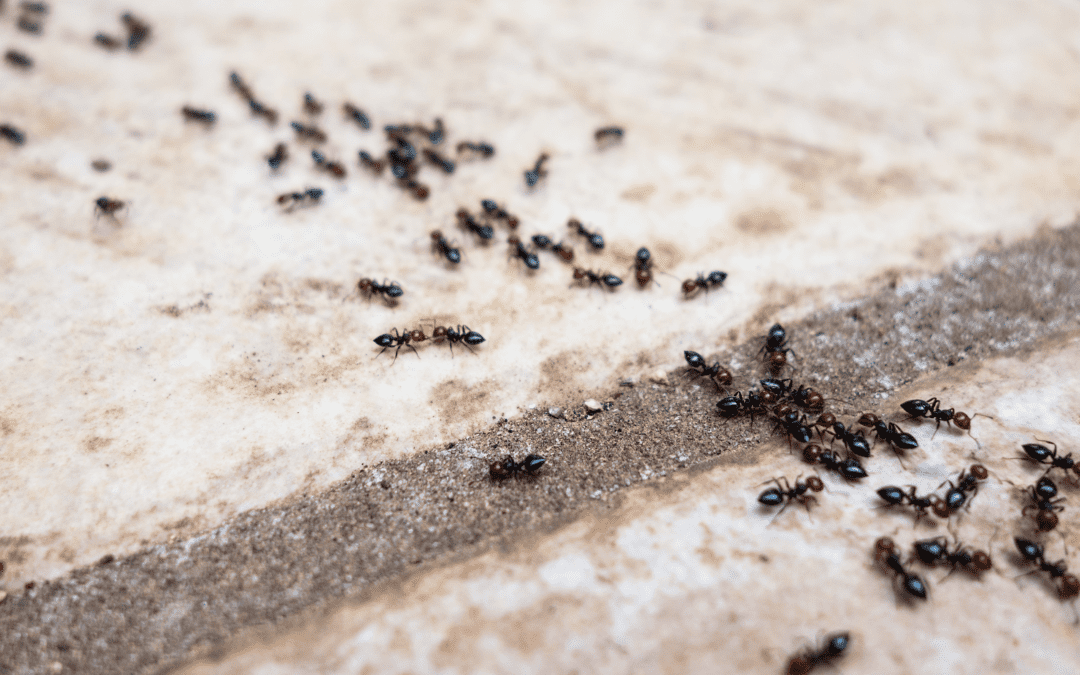READY TO GET STARTED?
REQUEST A FREE ESTIMATE
Fill out the form below or call (888) 466-7849 for a free, no-obligation estimate.

Ants are small, but they can cause big frustrations in your Miami home. Whether it’s Argentine ants marching through your kitchen or fire ants invading your yard, Miami’s warm, humid climate makes the city a prime destination for these pests. Traditional pest control methods often involve harmful chemicals, but eco-friendly ant control alternatives provide effective solutions that are not harmful for your home, health, and the environment.
Here’s how Miami residents can keep ants at bay with natural, green pest control methods that work.
Ants are always on the lookout for food, water, and shelter. Miami’s year-round warm weather, combined with the rainy season, creates the perfect environment for ants to thrive. They’re often attracted to crumbs, leaks, or even the smallest cracks in your home’s exterior.
Understanding which ant species you’re dealing with is key to effective pest control. Here are some common ants in Miami:
Using natural substances to repel ants is a great first step to keeping them out of your home:
Eco-friendly baits are a great way to target the colony itself. Mix sugar and boric acid into a paste and place it near ant trails. Worker ants will carry it back to the colony, slowly eradicating the infestation.
Diatomaceous earth is a natural powder that can be sprinkled around your Miami home. It dehydrates ants and works effectively in places like baseboards and entryways.
Ants are attracted to crumbs and food residue. Ensure your Miami home is spotless by:
Fix leaking pipes and faucets in your Miami home and dry up moisture in kitchens and bathrooms. Ants are always on the lookout for water sources and removing them will discourage them from entering.
Ants can sneak into your home through the smallest gaps. Be sure to:
Miami’s tropical environment provides a perfect place for ants to thrive. Here’s how to keep them out:
Certain plants can naturally repel ants while adding beauty to your home. Consider growing:
Miami’s warm climate makes ant infestations a common issue, but eco-friendly pest control solutions provide a greener way to protect your home. By using natural deterrents, sealing entry points, and focusing on prevention, you can keep your Miami home ant-free without relying on harmful chemicals. If you’re ready for a green pest control plan, contact a local pest control company for a free estimate.

If you have never encountered ants in your Alabama home, then count yourself lucky. These household pests have a knack at being some of the most annoying pests to infest – taking over your pantry, kitchen, bathroom, you name it! Here are the best methods of ensuring your home is never taken over by ants!
It’s not surprising to hear that ants prefer to invade kitchens; after all, they provide food, water, and everything ants (and other pests) need to survive. Bathrooms, bedrooms, living rooms, basements, inside walls, and in or around air conditioning and heating units are also known to attract these nuisance pests.
Moisture and standing water are big attractants for ants and many other pests. Be sure to repair any leaky pipes, and routinely check for excess moisture. If your basements, crawlspaces, or attics appear to be damp, then utilize a dehumidifier. On the outside of your home, ensure gutters and downspouts are functioning properly.
Keep your kitchen tidy by cleaning up after cooking and eating to lessen the chance of crumbs being left out. Utilize airtight containers to keep opened food items safe from these tiny pests. Also, make sure to clean up pet food that’s left out, as this is also an attractant for pests.
If ants are finding their way inside, then that means there are entry points on the exterior of your home. Take the time to find where ants are making their way indoors and seal any cracks, gaps, or openings. Utility pipes are usually the number one place where ants can find any potential openings.
Reach out to your local pest control company and they can provide an ant-free home!

Ants are small, annoying, and can sometimes lead to health risks. Finding them infested in your home is always alarming! There are several ant species found in the Fort Myers area, including ghost ants, white-footed ants, and carpenter ants. Once these pests infest your home, it can be extremely difficult to get rid of them. Check out our top 3 signs you need ant control for your home.
Carpenter ants are known to nest in damaged wood, especially wood that is damp from water. Their damage includes excavating wood to create their nests and creating holes. If you notice small trails of sawdust around, inside, or outside the home, it’s likely that you have ants.
Look for piles of sawdust near wooden beams, window ledges, skirting boards, and wood flooring. If you find sawdust or even the holes they create, it’s a sign that carpenter ants have infested.
Did you know that some ant types have wings for a short time? These ‘flying ants’ will usually swarm during the summer when a younger queen leaves the nest to start their own colony. If you notice discarded wings on the floors, windowsills, or doorsills, an ant colony could be inside the home.
One of the more serious signs of an ant infestation is noticing that your home’s wood structures are crumbling when touched. This is a sign that the home structure is weakened, sometimes caused by ants. Often, the wood can look normal from just looking at it, but a tell-tale sign if ants have infested is finding hollow-sounding wood that is weak under pressure.
To prevent ants, utilize these preventative measures throughout your home,

Having an ant infestation is a nuisance to any homeowner, as it can be difficult to control them once they’ve found their way inside. These pests tend to infest areas such as the bathroom and kitchen, searching for a place to nest and a food source. Ants are sneaky pests, often finding their way inside our homes without us even knowing. Check out the top 3 ways you attract ants inside and how you can prevent them in the future.
Ants are very small, making it easy for these pests to get through the smallest hole or gap. Your home’s doors, foundation, windows, and even utility lines can have holes or gaps, creating a way inside for ants. Foundation gaps that aren’t solid concrete blocks can lead to spaces for ants to enter. Likewise, ants will enter through doors or windows that aren’t sealed properly. Take some time and inspect the home’s interior and exterior for these openings.
Did you know ants can travel inside your floors? These pests often establish routes underneath carpets, tiles, and hardwood, making it difficult to spot them entering! Ants will often utilize subfloors, which are made up of pieces of plywood that provide enough space for ants to get inside. Often, these pests will enter through the floors when they’ve spotted a food source, such as leftover crumbs on the floor.
Many times we can bring these pests inside our homes by mistake! Ants can gain access inside by homeowners bringing in a toy or yard item that was left outside long enough for an ant colony to establish inside it. Plants can also carry ants inside when we bring them into our homes for the winter. Other items ants have hitchhiked on include used furniture or appliances, storage boxes, hoses, and even groceries!
There are many opportunities for ants to get inside the home, but with some DIY preventative measures in place, you can help prevent a major infestation. Here are some easy tips on preventing ants:
If you notice an ant problem bigger than you can handle, contact your local pest control company, where they can identify entry points and recommend a treatment and prevention plan.

Ants are known for being annoying and persistent, especially when taking over your yard. It’s important to know what type of ant you’re dealing with to determine how to get rid of them outside your home. Removing them from your yard will lessen the chances of seeing them inside your home. We have broken down the most common ants found in the South and how to remove them from your yard.
These bright or dark red ants love the warm climates of the South. They’re one of the smallest ants around but can be found in very large groups. Since they love the warmth so much, you’ll see fire ants building large underground nests in the sunniest parts of your yard.
They typically don’t become household pests, but because of their sting and the large groups they are found in, they deter families from enjoying time outside. They are known to attack in groups and their sting can become very uncomfortable.
These types of ants can be red or black and can often be mistaken for carpenter ants, although they are much smaller. They only have two parts to their body instead of the usual three. Often found in driveways, along sidewalks, or in other concrete structures, pavement ants can eventually become house pests.
They become house pests due to their continuous search for food and shelter. If they end up inside your home, that usually means there is a nest nearby. They aren’t as aggressive as the fire ant, but they can bite.
If the problem of ants has become more than you can handle, be sure to reach out to your local pest control company and they’ll be able to come up with the best plan of action to rid your yard of ants.